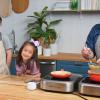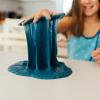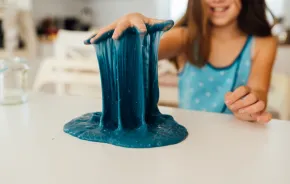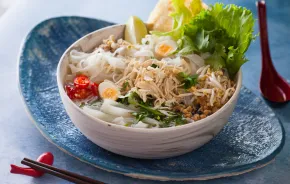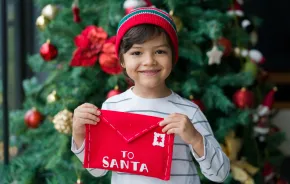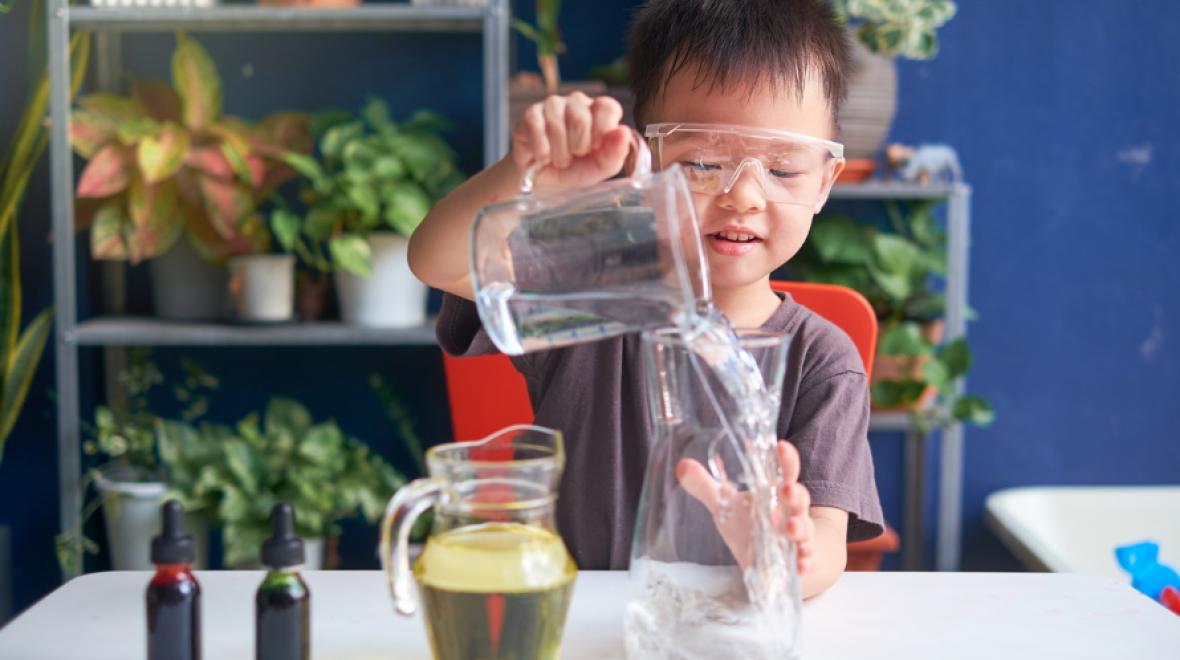
Did you know that inside your overflowing spice cabinet you can find the ingredients to create slime, an ice volcano and a rainbow?
These easy science experiments for kids put some ingenious twists on classic ones like baking soda and vinegar volcanoes, color-changing flowers, and cornstarch goop, and give you even more ideas for you and your kids to tackle and explore together. Kids will get excited about the wonderful world around them as they experiment, make a mess and get their hands dirty with science!
1. Elephant toothpaste
A big chemical reaction? Check. A glorious, foamy mess? Check. Glitter? Of course. Asia Citro of Fun at Home With Kids gives you and your kids the know-how to make “elephant toothpaste,” which is similar to a baking soda volcano, but with a bigger impact and a result that they can even play with. You can find a number of elephant toothpaste walkthroughs out there, but none as helpful as Asia’s. Follow her detailed tips to get the best exothermic reaction for your elephant toothpaste buck.
2. The physics of Oobleck
Like the baking soda volcano and elephant toothpaste experiments, it’s easy to find recipes for cornstarch slime. Jenae at I Can Teach My Child takes this activity one step further by including the actual science behind the slime, or “oobleck,” along with the perfect recipe for slimy fun. Toddlers and preschoolers will just love to play, while older kids can learn about atoms and non-Newtonian fluids.
3. Baking soda and vinegar Ice volcano
Baking soda-and-vinegar volcanoes are a quick, easy way to introduce kids as young as toddlers to chemical reactions. Some baking soda volcanoes are even a little too quick, and won’t make much of a mark on a young scientist’s memory. At Reading Confetti, you’ll find the steps for making a one-of-a-kind ice volcano that takes the kids outside for colorful science fun that they’re sure to remember.
4. Easy Solar Over
As summer temperatures soar it’s a perfect time for this outdoor experiment. You can make these simple solar ovens from thing you probably already have at home, fill them with treats and watch the sun do all the work. Experiment with ovens of different sizes, material and "cooking" times to learn about how each element of the experiment impacts the outcome. Find all the details on the Desert Chica blog.
5. Lego excavations
Got a wannabe-archaeologist-slash-Lego-fanatic in the family? She will love to unearth her favorite minifig in this fun activity. Dayna of Lemon Lime Adventures posed a unique question to her kids, “How would you carefully remove a fossil encased in ice?” Dayna shares the how-to for giving kids the tools they need to safely rescue their Legos from a frozen fate. (Hammers not included.)
6. Floating Ink
Have some dry erase markers, a dish and some water? Then you can amazing your family and friends with the floating ink experiment. Simply draw a small picture on a flat surface, let it dry and slowly add some water. Your images will magically float around and come to life! Kids can experiment with drawing of different sizes, different markers and how to add the water (slowly? quickly? with a dropper?) and see what combination results in the best results. Jackie at Happy Hooligans has all the details you’ll need.
7. Rainbow jar
Toddlers and preschoolers are endlessly enamored of rainbows, and Jen Rice at Playdough to Plato tells you how teach the fundamentals of density by making a colorful concoction. As a bonus, Jen even includes a how-to for giving a lesson on molecules and density that small children can understand. Before you and your kids carefully pour the magical liquids into the jar, be sure to first read all of Jen’s steps to make the perfect rainbow.
8. Rain cloud in a jar
This science activity is practically a must-do for Seattle kids. If your children have ever wondered how rain falls, you can show them indoors — with little mess — thanks to Danielle at Fun Learning for Kids. The simple demonstration includes a printable, so your mini meteorologists can record all their findings — just like a real scientist.
9. Hot and cold air
On the Mom to 2 Posh Lil Divas blog, you’ll find a science activity that will blow kids’ minds. With your help and just a balloon and plastic bottle, they can explore the effects of heated and cooled air molecules and air pressure. While the experiment only takes a few minutes to run, you’ll likely find yourself performing the scientific magic trick over and over for an enthusiastic audience.
10. Coloring wild carrot
Will Queen Anne’s lace (also called wild carrot) change color if its water is dyed? An experiment often done with white carnations, Melissa at Fireflies and Mud Pies used wild carrot instead (so a wildflower hunt is now part of the fun). Twenty-four hours later, and your kids can see firsthand how plants and flowers pull water up through the stem. Kids might enjoy experimenting with various colors to test the vibrancy of each or even a different type of dye (such as Kool-Aid).
Editor’s note: This article was originally published a few years ago and updated in 2023.









